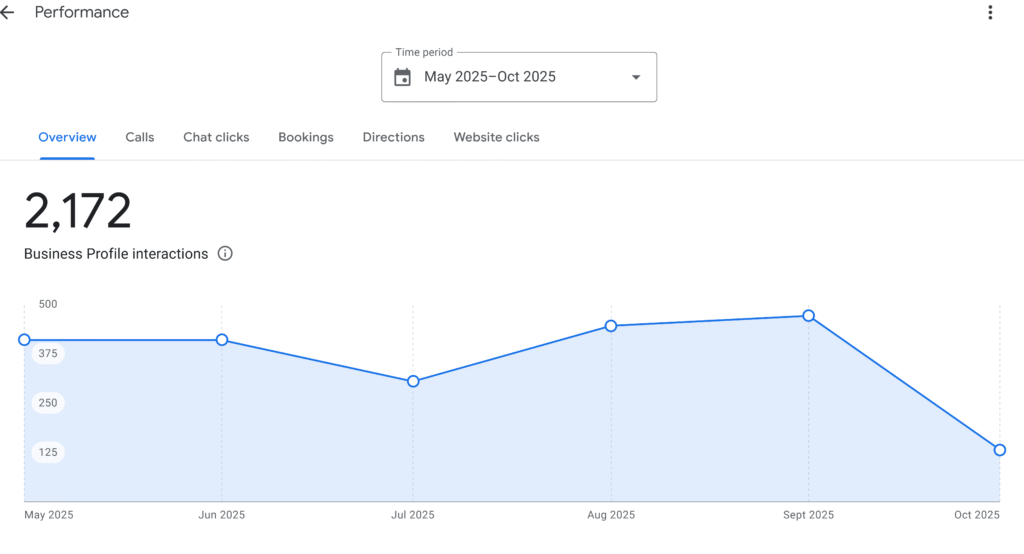Every local SEO guide tells you to claim your Google Business Profile and call it a day. That advice isn’t just incomplete – it’s leaving money on the table. The real power of business listings isn’t about having a presence; it’s about orchestrating a network of signals that search engines can’t ignore.
The Role of Local Business Listings in Local SEO
Think of local search rankings like a trust game. Search engines need to verify that your business is real, active, and worthy of showing to searchers. Business listings are your proof points – each one adding another vote of confidence in your legitimacy. But here’s where most businesses mess up: they treat listings like a checkbox exercise instead of a strategic asset.
Improving Local Search Visibility
Your visibility in local search hinges on something called the Local Pack – those three blessed spots that appear above organic results when someone searches “coffee shop near me” or “plumber in Austin.” Getting there requires more than just existing online. You need what I call “digital omnipresence” – appearing consistently across the directories that matter in your industry.
The algorithm looks for patterns. When it sees your business name and address and phone number appearing identically across 50 different trusted sources, that’s a strong signal. It’s validation.
But quantity alone won’t cut it. The importance of business listing in SEO comes down to relevance and authority. A listing on the Chamber of Commerce website carries more weight than a random directory nobody’s heard of. Focus on industry-specific directories first, then expand to general ones.
Building Trust Through NAP Consistency
NAP consistency (Name, Address, Phone number) sounds boring until you realize inconsistent information is actively tanking your rankings. I’ve seen businesses drop from position 3 to position 15 just because their suite number was formatted differently across directories.
Here’s what drives me crazy: businesses spend thousands on SEO while their NAP data is a complete mess. You’ve got “Street” on one listing, “St.” on another, and “St” (no period) on a third. Google sees these as potentially different businesses.
The fix? Create a master document with your exact NAP format and copy-paste it everywhere. No variations. No creativity. Just brutal consistency.
Driving Referral Traffic
Most people obsess over rankings and forget that business listing in SEO serves another purpose: actual clicks. A well-optimized Yelp profile or industry directory listing can send qualified traffic directly to your website or store. I’ve tracked clients getting 200+ visits monthly from a single optimized directory listing – traffic they weren’t even measuring before.
The secret is treating each listing like a mini landing page. Add photos, detailed descriptions, special offers. Make it compelling enough that someone would choose you even without visiting your main website.
Strengthening Backlink Profile
Every legitimate business directory that links to your website is a backlink. Not the most powerful backlinks in the world, sure, but they add up. More importantly, they create a foundation of natural, location-relevant links that make your other link-building efforts more effective.
Think about it: what looks more natural to Google – a local bakery with 50 high-quality blog backlinks but zero local directory links, or one with a mix of both? The directories provide context that makes everything else more believable.
Supporting Citation-Building Strategy
Citations – mentions of your business name and address without a link – still matter for local SEO. Each directory listing is a structured citation that search engines can easily parse and understand. The beauty is that once you create these listings, they work on autopilot, continuously reinforcing your local presence.
But here’s the thing nobody talks about: unstructured citations from local news sites, blogs, and community pages often carry more weight than directory citations. Use your directory presence as a foundation, then build relationships that earn you mentions in local content.
Top Business Listing Platforms That Drive Local SEO Success
Not all directories are created equal. Some move the needle; others are just busy work. After analyzing hundreds of local campaigns, I can tell you exactly which platforms deliver results and which ones you can skip (at least initially).
Google Business Profile Features That Matter Most

Your Google Business Profile (GBP) is the 800-pound gorilla of local business directories. If you do nothing else, nail this one. But most businesses use maybe 20% of its features.
The game-changers? Posts, Q&A, and attributes. Posts let you push updates directly into search results – think of them as free ads that also boost engagement signals. The Q&A section is where you preemptively answer buyer questions and naturally include keywords. And attributes? They’re the difference between showing up for “restaurant” versus “romantic waterfront restaurant with vegan options.”
| GBP Feature | Impact Level | Time Investment |
|---|---|---|
| Regular Posts | High | 15 min/week |
| Photos | High | 30 min/month |
| Q&A Management | Medium | 20 min/month |
| Review Responses | High | 1 hour/month |
| Attributes | Medium | One-time setup |
Pro tip: Upload new photos every week. Google rewards fresh content, and businesses with recent photos get 42% more requests for directions.
Essential Local Business Directories Beyond Google
After Google, your priority list should look something like this:
- Yelp – Still massive for consumer-facing businesses, especially restaurants and services
- Facebook Business – The sleeper hit that drives more traffic than most people realize
- Apple Maps – Growing fast, especially important if your customers use iPhones
- Bing Places – Powers results for Bing, Yahoo, and Cortana. Takes 10 minutes to set up
Industry-specific directories matter even more. A law firm needs Avvo and Justia. A restaurant needs OpenTable and TripAdvisor. A contractor needs Angi and Houzz. These targeted directories don’t just help rankings – they put you in front of buyers actively looking for your specific service.
Platform-Specific Optimization Strategies
Each platform has its quirks. Yelp rewards businesses that engage with the community and avoid overly promotional language. Facebook loves video content and frequent updates. Apple Maps prioritizes businesses with complete information and good ratings.
Here’s something most guides won’t tell you: optimize for the platform’s internal search first, Google second. A Yelp listing optimized for Yelp’s search algorithm will get more views on Yelp, which creates engagement signals that Google notices. It’s a virtuous cycle.
Want to know how to improve local search rankings fast? Start responding to reviews on every platform. Not just the bad ones – all of them. It shows you’re active, engaged, and care about customer feedback. Plus, your responses are indexable content that can include relevant keywords (naturally, not stuffed).
Measuring Directory Performance Metrics
Most businesses set up their listings and never look at them again. Meanwhile, they’re missing data that could transform their local strategy. Every major platform provides analytics – use them.
Track these metrics monthly:
- ✓ Direct searches (people who found you by name)
- ✓ Discovery searches (people who found you by category)
- ✓ Actions taken (calls, directions, website clicks)
- ✓ Photo views compared to competitors
- ✓ Review velocity and rating trends
The real gold? Compare your metrics to competitors. Most platforms show competitive benchmarks. If your photos get 500 views while competitors average 2,000, you know exactly what to fix.
Maximizing Your Local SEO Through Strategic Business Listings
Business listings aren’t just about being found – they’re about dominating the local search landscape. The businesses crushing local SEO right now understand this isn’t a “set it and forget it” game. They’re actively managing, optimizing, and expanding their directory presence while their competitors wonder why they’re stuck on page two.
Start with the fundamentals: claim and optimize your Google Business Profile completely, ensure NAP consistency across all platforms, and focus on the directories that matter most to your industry. Then level up by treating each listing as a conversion opportunity, not just a citation.
Remember that local SEO is essentially a trust game. Every consistent listing, every responded review, every updated photo adds another layer of credibility. Stack enough of these signals and search engines have no choice but to rank you prominently. The best part? Once you build this foundation, it keeps working for you 24/7, sending customers your way while you sleep.
Stop treating business listings like paperwork. Start treating them like the competitive advantage they really are.
FAQs
How many business directories should I list my business on?
Quality beats quantity every time. Start with 20-30 high-authority directories relevant to your industry, then expand strategically. Most local businesses see diminishing returns after 50-60 listings unless they’re in highly competitive markets. Focus on maintaining and optimizing your core listings rather than chasing every directory that exists.
What happens if my NAP information is inconsistent across directories?
Inconsistent NAP creates confusion that directly hurts your rankings. Google might treat each variation as a different business, splitting your authority instead of consolidating it. You’ll see lower map rankings, reduced visibility in local search, and potentially duplicate listings that compete against each other. Fix inconsistencies immediately – the ranking boost usually appears within 4-6 weeks.
How often should I update my business listings?
Check your top 10 listings monthly and all listings quarterly. Update immediately when anything changes – hours, services, photos, or contact info. Add fresh photos to Google Business Profile weekly and post updates at least twice monthly. Regular activity signals that your business is active and engaged, which positively impacts rankings.
Do paid business directory listings improve local search rankings?
Paid listings themselves don’t directly boost SEO – Google doesn’t care if you paid for a listing or not. However, paid listings often come with enhanced features like additional photos, longer descriptions, and premium placement within the directory itself. These features can increase engagement and traffic, which indirectly supports your SEO. Only pay for directories that send actual customers, not just for the backlink.
Which business listing factors have the biggest impact on local SEO?
Google Business Profile optimization carries the most weight – it’s not even close. After that: NAP consistency, review quantity and rating, photo frequency, and category relevance matter most. The surprise factor? Response rate to reviews and Q&A engagement have become increasingly important ranking signals. Businesses that respond to 100% of reviews typically outrank those that don’t, even with fewer overall

Ridam Khare is an SEO strategist with 7+ years of experience specializing in AI-driven content creation. He helps businesses scale high-quality blogs that rank, engage, and convert.



